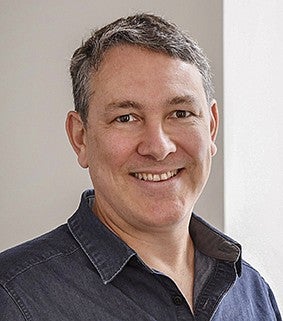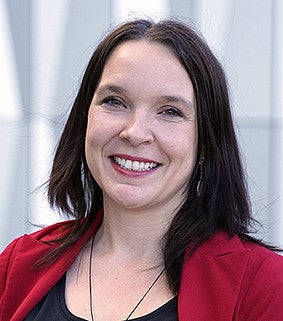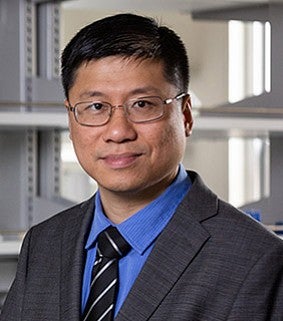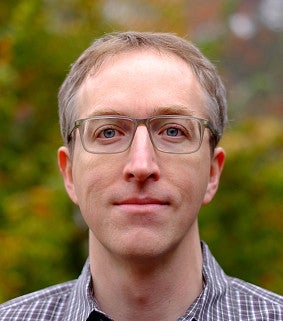Our Mission | Projects | People | Publications | Careers | News

3D-Printed Nanofibrillar Scaffolds for Tendon and Ligament Repair
Paul Dalton, Associate Professor, Knight Campus
Newly invented technologies by Knight Campus faculty have established 3D printing methods that can mechanically mimic soft tissue by incorporating nano- and microscale materials within biomaterial scaffolds. These enabling technologies are the first-of-their-kind in the world and will be used to develop 3D culture models, to test new technologies and rehabilitation approaches for tendon and ligament injuries.

Development of a Multifunctional Hydrogel Platform for Investigating and Enhancing Muscle Regeneration
Marian Hettiaratchi, Assistant Professor, Knight Campus
Proteins – and the chains of amino acids that make up proteins – are used as bricks and mortar by your body to rebuild damaged or injured muscle fibers. This project will develop: 1) a research platform that will allow us to investigate the impact of injury and treatment on muscle in the laboratory; and 2) a library of therapeutic hydrogels that will accelerate and target the delivery of proteins to muscle for improved repair. Ultimately, our expertise in hydrogel chemistry and protein delivery will allow us to efficiently translate findings from our laboratory muscle model into viable therapeutic strategies for muscle injury.

Developing Traumatic Joint Injury Treatment Strategies Using Therapeutic Delivery and Physical Rehabilitation to Enhance Functional Recovery and Prevent Progression of Post-Traumatic Osteoarthritis
Angela Lin, Senior Research Engineer, Guldberg Lab, Knight Campus
After traumatic joint injury, athletes go through a lengthy and complex return to sport and even with best treatment practices will have compromised long-term joint health. This is in part because standardized approaches to maintaining long term joint health and preventing post-traumatic osteoarthritis are largely nonexistent. This project will develop pre-clinical models, tools, therapies, and characterization techniques and translate these to human clinical treatment and rehabilitation approaches for traumatic joint injuries.

Synovial-Cartilage Organoids for Pre-Clinical Rehabilitation Modeling and Treatment of Knee Trauma
Gabriella Lindberg, Assistant Professor, Knight Campus
Injuries to the knee joint is common in young, active, and athletic individuals, and associated with an increased risk of developing joint pain and reduced quality of life within 3-10 years post injury. To address this clinical challenge, Dr Lindberg’s research is looking at ways of 3D-bioprinting patient's own cells with biomaterials into joint-organoids and pre-clinical rehabilitation models to probe the recovery of acute inflammation and cartilage degradation following joint trauma. Utilizing our expertise in 3D-bioprinting offers improved technical capability to accelerate the development of cellular therapy approaches synergistic with rehabilitation strategies - crucial for high-quality care of young active individuals.
Advanced Suture Sensor Technology for Sport Medicine Applications
Keat Ghee Ong, Professor, Knight Campus
Sutures are an integral part of sports medicine and are commonly used to repair torn muscles and tendons, and close surgical and injury wounds. Recent innovations from faculty at the Knight Campus have enabled the integration of sensors into sutures. These sensorized sutures can greatly improve outcomes of sports injuries by providing biofeedback for therapy, as well as studying and monitoring the injury. However, sensorized sutures often require electronic components that are not inherently biocompatible and/or biodegradable, limiting their application to surface wounds, or forcing later surgery for suture removal. In partnership with UO Athletics and OHSU, we will develop a new biodegradable suture that can monitor conditions at the injury sites and provide new data to study sports injury and recovery.
Training and Rehabilitation Impacts on Cell and Molecular Mechanisms of Skeletal Regeneration
Kryn Stankunas, Associate Professor, Biology
Athletes are susceptible to bone fractures from trauma, stress, and overuse. Rehabilitation improves repair following musculoskeletal damage but restoring performance-adapted function for a safe return to competition can be slow and unpredictable. We are learning how mechanical forces influence genes, cells, and tissues acting at distinct phases of skeletal repair using zebrafish – a spectacular regeneration model developed at the University of Oregon. We will integrate our insights with human studies to pinpoint novel approaches combining regenerative medicine and rehabilitation for optimal injury repair and recovery.



